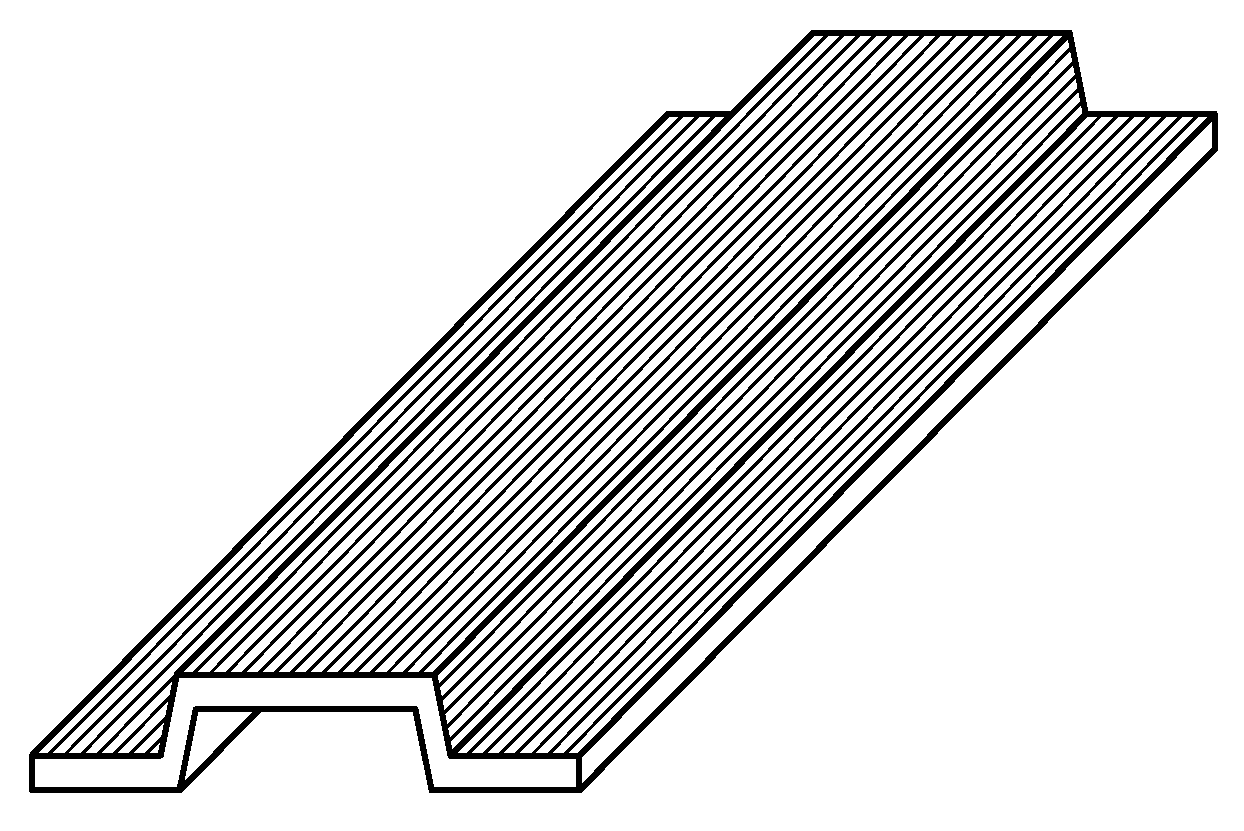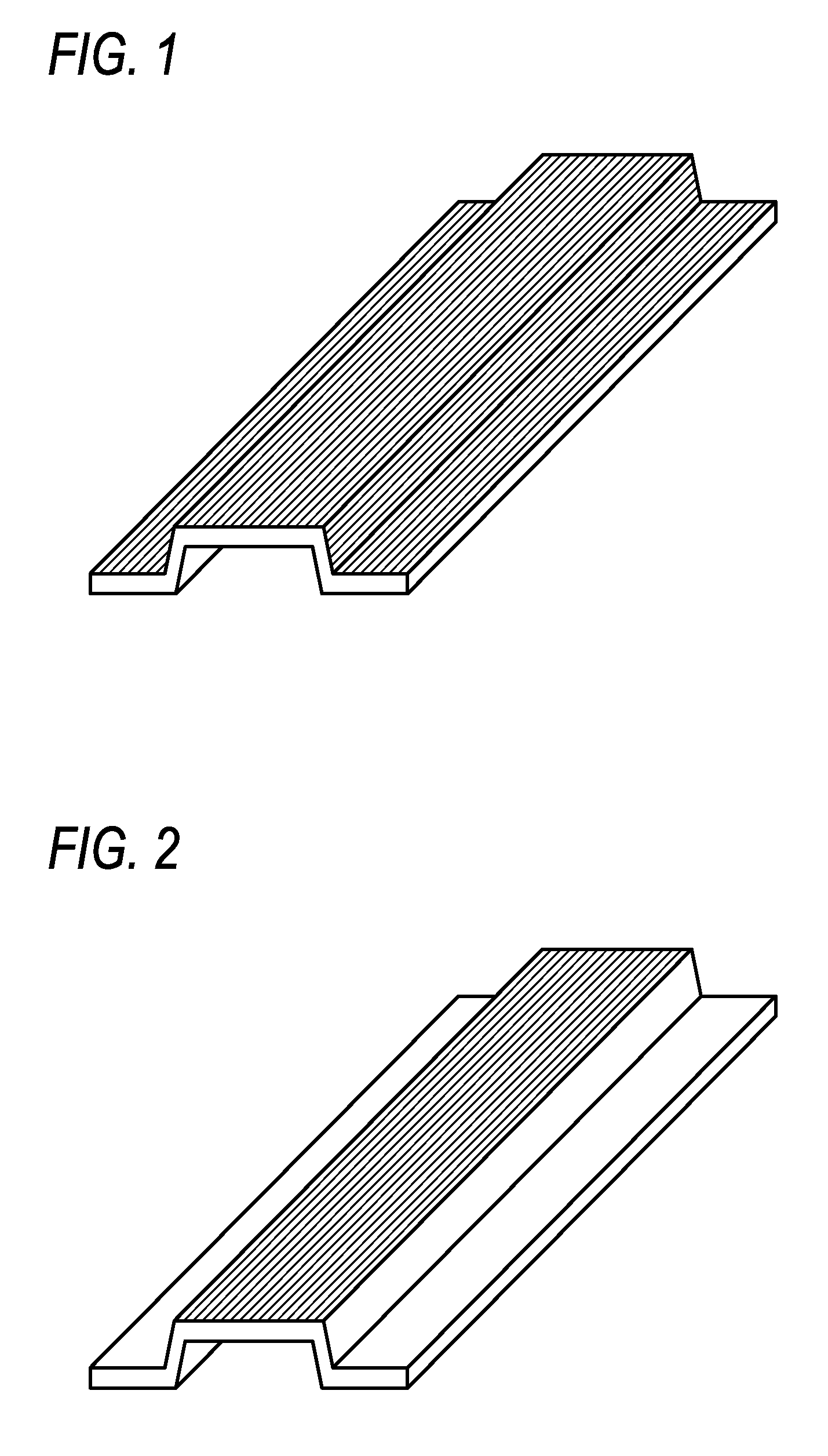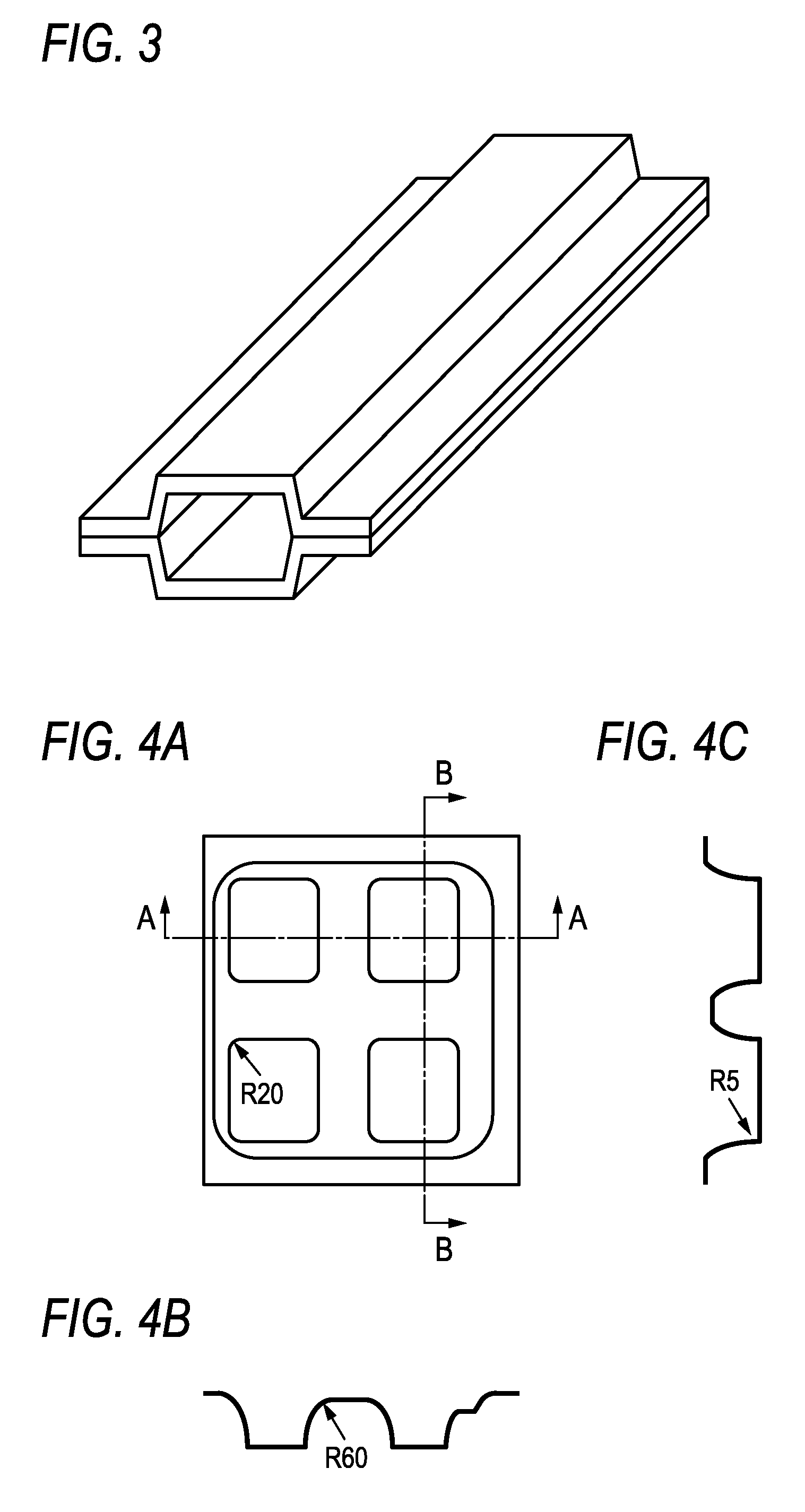Carbon fiber bundle, method for producing the same, and molded article made thereof
a technology of carbon fiber and polypropylene, which is applied in the direction of synthetic resin layered products, textiles and papermaking, woven fabrics, etc., can solve the problems of low elongation and is prone to fluffing, the adhesion-improving effect of a silane coupling agent cannot be expected, and the strength of the resulting carbon fiber-polypropylene composite material is hardly improved, so as to improve the adhesion and compatibility, improve the effect of handling and bun
- Summary
- Abstract
- Description
- Claims
- Application Information
AI Technical Summary
Benefits of technology
Problems solved by technology
Method used
Image
Examples
example 1
[0107]280 parts by mass of a propylene-styrene copolymer (the molar ratio of styrene per 100 of propylene: 1), 25 parts by mass of maleic anhydride, 7 parts by mass of dicumyl peroxide, and 420 parts by mass of toluene were added to an autoclave provided with a stirrer. After nitrogen purge for about 5 minutes, the mixture was allowed to react at 140° C. for 5 hours with heating and stirring. After the completion of the reaction, the reaction liquid was placed in a large amount of methyl ethyl ketone to precipitate a crude copolymerized polyolefin. The crude copolymerized polyolefin was further washed with methyl ethyl ketone several times to remove unreacted maleic anhydride, and then dried under reduced pressure to give a solid copolymerized polyolefin. As a result of infrared absorption spectrum measurement, the copolymerization ratio of maleic anhydride was 0.7 per 100 of propylene in a molar ratio. In addition, as a result of high-temperature GPC measurement, the weight average...
example 2
[0115]A solid copolymerized polyolefin was obtained by the same method as in Example 1, except that 280 parts by mass of a propylene-ethylene-styrene copolymer (the molar ratio of ethylene per 100 of propylene: 100, the molar ratio of styrene per 100 of propylene: 2), 70 parts by mass of maleic anhydride, 5.6 parts by mass of di-tert-butyl peroxide, and 420 parts by mass of toluene were used. As a result of infrared absorption spectrum measurement, the copolymerization ratio of maleic anhydride was 0.8 per 100 of propylene. In addition, as a result of high-temperature GPC measurement, the weight average molecular weight was 82,000. Then, a copolymerized polyolefin emulsion was prepared by the same method as in Example 1. A carbon fiber bundle was sized with the obtained copolymerized polyolefin emulsion, and the amount of the copolymerized polyolefin attached was measured. The result was 1.3 parts by mass per 100 parts by mass of the carbon fiber bundle.
[0116]The obtained carbon fib...
example 3
[0118]A copolymerized polyolefin was obtained by the same method as in Example 2, except that in the propylene-ethylene-styrene copolymer, the molar ratio of the α-olefin was 150 per 100 of propylene. Then, a copolymerized polyolefin emulsion was prepared by the same method as in Example 1, and a carbon fiber bundle was sized therewith. Subsequently, the tensile shear strength of the carbon fiber bundle with a polypropylene film was measured.
[0119]The obtained carbon fiber bundle was measured for tensile shear strength in the same manner as in Example 1. As a result, high shear strength was obtained as shown in Table 1.
[0120]The obtained carbon fiber bundle was measured for the amount of fluff due to abrasion in the same manner as in Example 1. As a result, as shown in Table 1, the amount of fluff due to abrasion was small.
PUM
| Property | Measurement | Unit |
|---|---|---|
| molar ratio | aaaaa | aaaaa |
| length | aaaaa | aaaaa |
| wt % | aaaaa | aaaaa |
Abstract
Description
Claims
Application Information
 Login to View More
Login to View More - R&D Engineer
- R&D Manager
- IP Professional
- Industry Leading Data Capabilities
- Powerful AI technology
- Patent DNA Extraction
Browse by: Latest US Patents, China's latest patents, Technical Efficacy Thesaurus, Application Domain, Technology Topic, Popular Technical Reports.
© 2024 PatSnap. All rights reserved.Legal|Privacy policy|Modern Slavery Act Transparency Statement|Sitemap|About US| Contact US: help@patsnap.com










